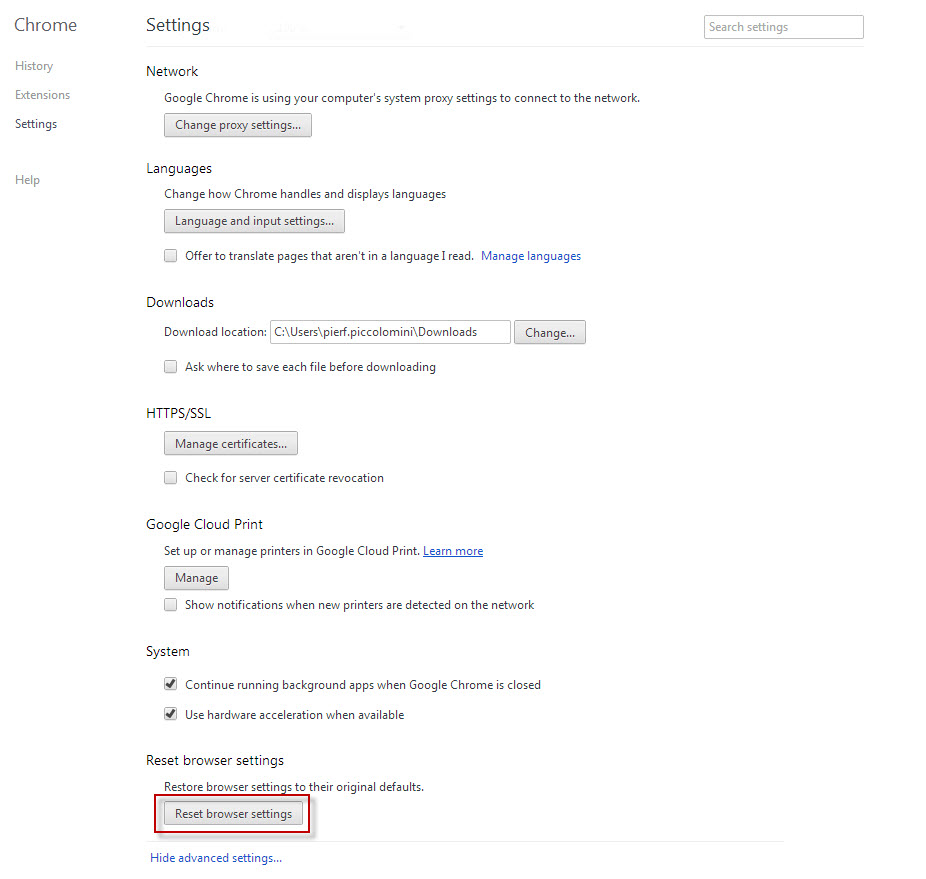
If that's a function you use often and want to make as quick 'n' painless as possible to access, all those saved letters can make a meaningful difference. But you could make it something even shorter yet, like cc or even just c. In the example above, I went with cache instead of the longer clear cache, as Google has that command set to be. You can do the same thing for most of the initial commands Google's officially providing, and - best of all - you can make the actual shortcuts anything you want. As a result, you can now type the word cache into the Chrome address bar, no matter what site you've got open or what else you might be doing, and you'll be transported immediately to Chrome's cache-clearing tool. In the box that comes up next, type Clear Cache into the "Search engine" field, type cache into the "Keyword" field, and type or paste the following string into the "URL" field: chrome://settings/clearBrowserDataĪnd that's it: You've just created your first custom Chrome action.Now look for the Add button, which should be right beneath the first section of items (the "Default search engines") on the screen.Scroll down until you see the Search Engine section and click the line labeled "Manage search engines.".Type chrome:settings into the Chrome address bar on your computer (no matter what type of computer or operating system you're using).So for the first part of our emulating-and-one-upping-that-system process, let's create our own custom commands for some of those same officially supported actions, starting with the cache-clearing option. Ready to make your life a little bit easier? Deconstructing Chrome ActionsĪll right - first things first: Let's refresh ourselves on how Google's official Chrome Actions feature works and what it can actually do right now.Ĭhrome Actions, according to Google, is "a faster way to get things done with just a few keystrokes." You type a specific shortcut command into the Chrome address bar - something like clear cache, edit passwords, or translate this page, to use a few examples from the six supported actions present in the system at its launch - and Chrome responds and takes you to the appropriate associated place. You can make those shortcuts even shorter and thus faster to use, too - and you can make 'em take you practically anywhere imaginable within your browser or across this wild ol' web of ours. It occurred to me that there's an incredibly easy way to emulate exactly what Google's doing with this new Chrome Actions system and create your own custom browser address bar shortcuts this very second. Well, fear not, my efficiency-adoring amigos, for I've got instant fixes for both of those irksome issues.

And second, the feature is pretty limited in what it's actually able to do and how it's able to do it, anyway.


#Chrome new tab browser location url update#
That's also why I was disappointed to realize two things: First, the feature still hasn't made its way to me or lots of other people, it seems, despite the Chrome update itself arriving some time ago (an almost comically cliche Google move known not-so-affectionately among enthusiasts as the "trollout"). That's why I was delighted to see that Google was working on a new system of Chrome address bar actions - a feature officially known as Chrome Actions that launched with the most recent Chrome update. Like so many of my fellow modern mammals, I spend most of my day gazing into the soul of Chrome's barely-there borders - particularly on my desktop computer, where almost everything I do takes place within those four virtual walls. Anything that can save me time and make getting around my devices more efficient is a welcome addition in my world.Īnd for me, at least, there's no better place for a speed-boosting injection than the humble internet browser.


 0 kommentar(er)
0 kommentar(er)
